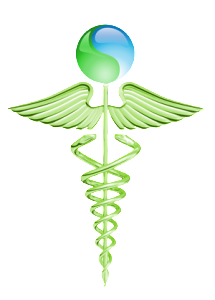
How can we know what foods or herbs are beneficial for us?
Nature does not come with its own manual, or does it? Native American Indians and Oriental cultures believe it does.
Nature is economical and it likes to reuse its designs as much as possible.
One way that Nature directs us to the foods and herbs that will help us is by the Doctrine of Signatures.
The Doctrine of Signatures states that by observing where a plant grows, or by the color or shape of its flowers, leaves or roots, or by its growth location, we are given the guide to its medicinal use. Some herbalists see it as God’s signature.
The Shape-
Beans are the kidney shaped and are considered especially nourishing for the kidneys by practitioners of Traditional Chinese Medicine (TCM).
Pumpkins are large, round and hollow, just like stomachs. Many traditional cultures recommend pumpkin as a cure for stomach problems.
Walnuts resemble the brain in appearance. The omega 3 fatty acid in walnuts improves brain function and boosts memory.
The herb, Hepatica Acutiloba is a perennial wildflower which grows in the eastern United States. It has a three-lobed leaf resembling a liver. Herbalists use this herb to treat liver conditions.
A classic example of the Doctrine of Signatures is ginseng. This root is shaped like a human body, and in fact, ginseng is reputed to boost overall health and the immune system.
The carraway seed is similar in appearance to the secretory gland in the digestive tract. It is often added to German cooking to help with digestion.
The appearance of nettle is similar to hair. It is used in herbal potions to assist with hair problems.
The herb boneset has a stem that appears to be growing through the leaves. Herbalists believed that this was a clue to the use of boneset as a herb to set bones.
Aniseed has a very similar appearance to the terminal alveoli of the lung, and in fact it is used for coughs.
The Location –
The herb arnica, which is used for blows, strains and bruises, grows on rocky slopes of hills and mountains where these injuries are common.
Elder and skunk cabbage grow naturally in wet lowlands or swamps and are used for diseases of wetness such as colds and respiratory disorders.
In general it is assumed that a plant that grows in wetlands or marshy land would be good for wet disorders in the body. One such plant is watercress, which is recommended for coughs, head colds, bronchial ailments, tuberculosis, asthma, emphysema and kidney stones, among other things.
The Color – Red and purple flowers and fruits are often blood cleansers or blood builders. Red berries are recommended by medical practitioners as blood builders.
Burdock, echinacea and sweet violet are used to treat disorders of the blood and skin. However beware, because nature has another use for red and that is for danger or for heat – so be careful when you nibble chillis!
Yellow is a color associated with the liver and gallbladder. Dandelion is one of the best remedies for the liver and it has a yellow flower. Yellow Dock is another important liver herb, although in this case the color is in the root.
Blue is said to be soothing to the digestive system. Lavender and motherwort which have pale lilac-blue flowers, are used in cooking as digestive herbs.
In TCM it is said that the color black is associated with the kidneys – hence a black bean would be extremely good for the kidneys. Black sesame seeds are also considered to be good for the kidneys, and even black spruce essential oil is indicated for adrenal burn-out.
The Texture-
Touch signatures are also considered to be significant. Certain plants that are rough or prickly are used therapeutically for skin conditions.
Aloe vera is a very spiky plant and is used for healing wounds.
Nettle is used both herbally and homeopathically for itching, rashes, or other irritated skin conditions.
The above are just a few examples of how nature stamps its signature on plants.

Source by Roslyn Motter
 Vitamin Agent The Health & Naturalistic Source
Vitamin Agent The Health & Naturalistic Source



